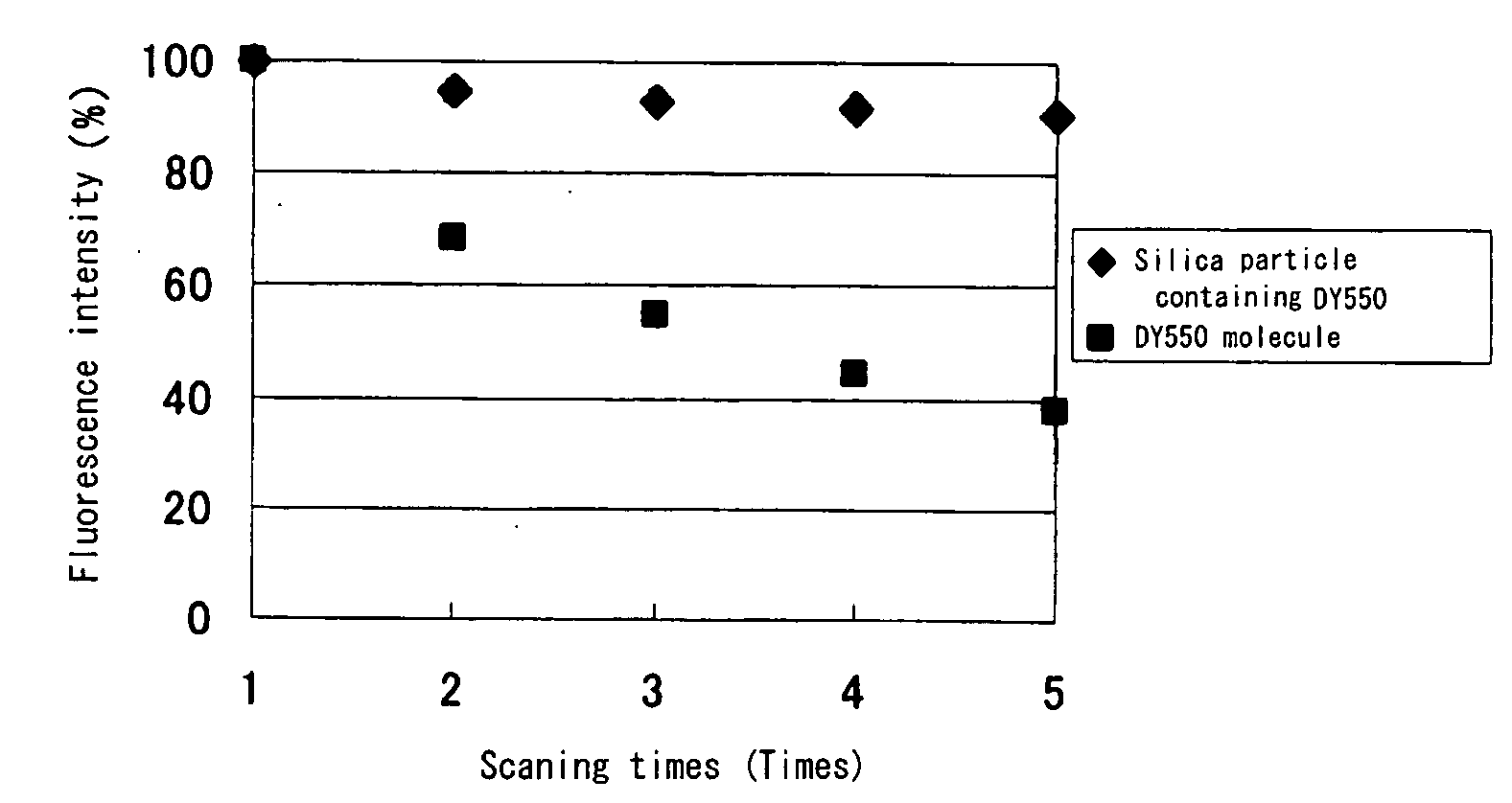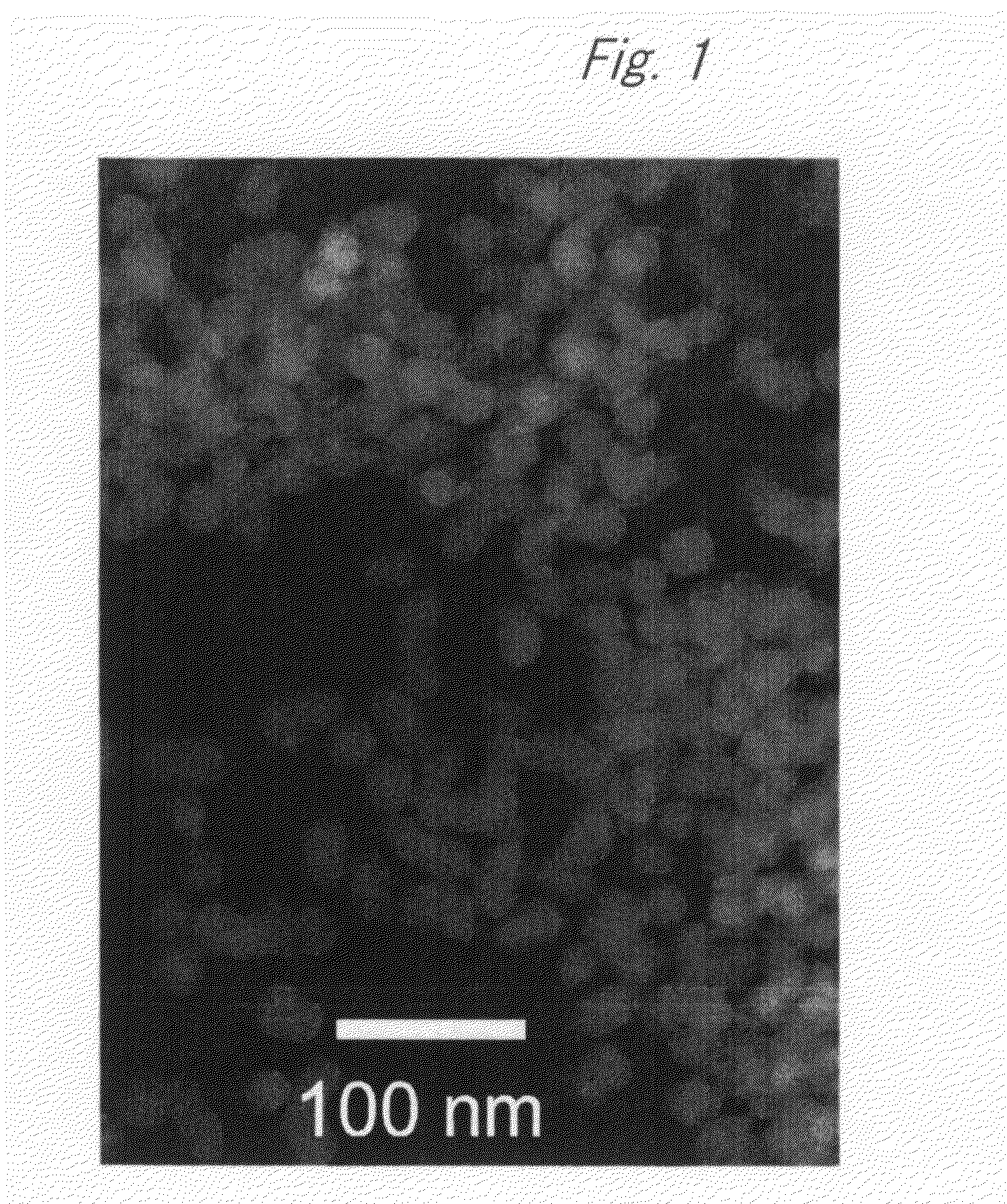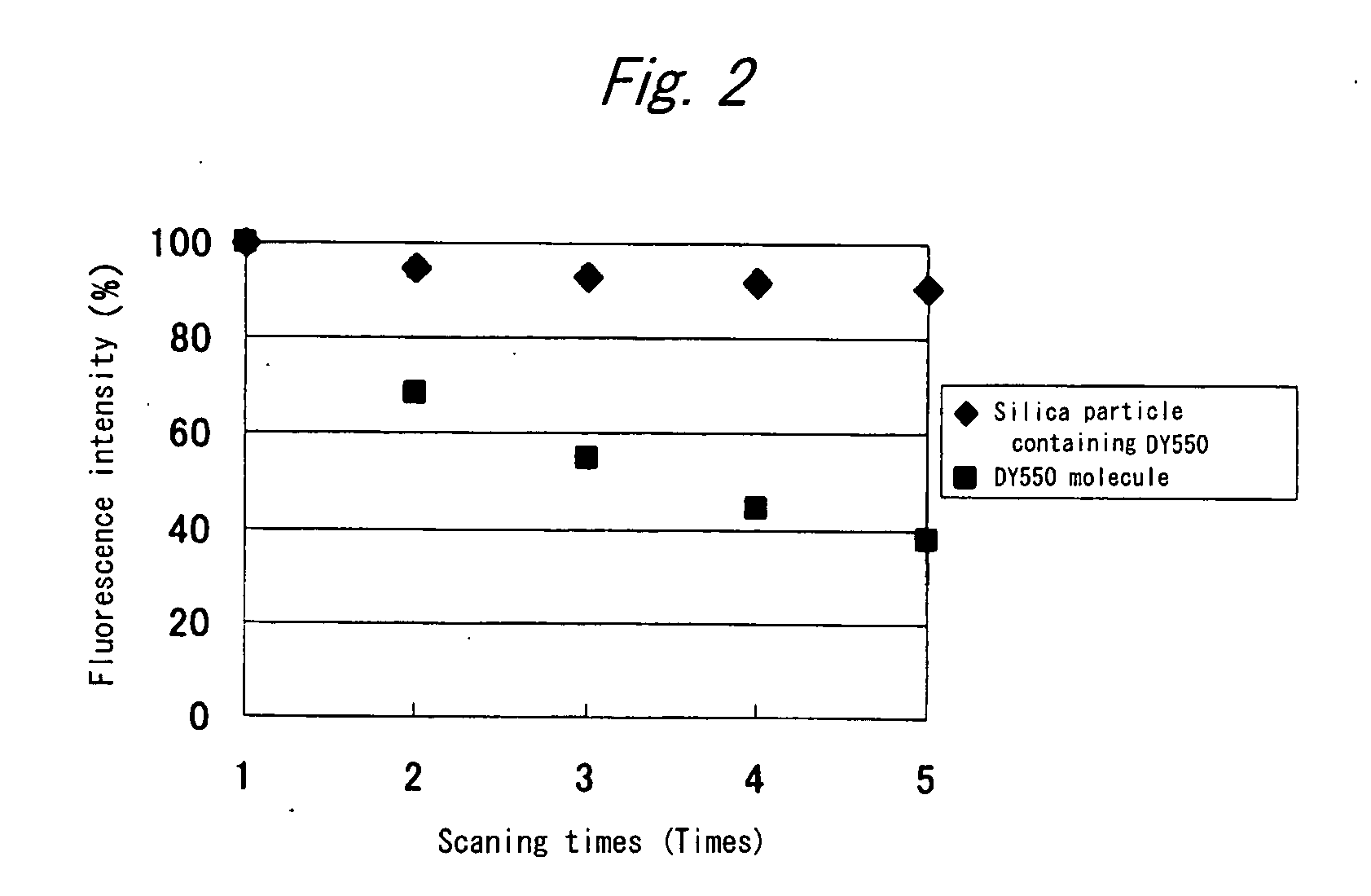Fluorescent silica nano-particle, fluorescent nano-material, and biochip and assay using the same
a technology fluorescent nanoparticles, which is applied in the field of fluorescence silica nanoparticles, fluorescent nanomaterials, and biochip and assay using the same, and can solve the problems of unsatisfactory clinical application reliability of data obtained, low reproducibility of data obtained by biochips including dna chips, and difficulty in applying such nanoparticles to dna chip analyzers currently used widely
- Summary
- Abstract
- Description
- Claims
- Application Information
AI Technical Summary
Benefits of technology
Problems solved by technology
Method used
Image
Examples
example 1
Preparation of Colloidal Silica Particles Containing a Fluorescent Dye Compound for a Biochip
[0185]First, a method of preparing multiple colloidal silica particles containing a fluorescent dye compound having an average diameter of 30 nm or less will be described.
[0186]5.6 mg of DY550-NHS ester (trade name, manufactured by Dyomics GmbH) was dissolved in 1 ml of dimethylsulfoxide (DMSO). 1.3 μl of APS was added thereto, and the mixture was allowed to react at room temperature (25° C.) for one hour.
[0187]3.95 ml of ethanol, 20 μl of MPS, 1 ml of distilled water, and 100 μL of 28 mass % ammonia water were added to 50 μl of the reaction solution obtained, and the mixture was allowed to react at room temperature for 24 hours.
[0188]The reaction solution was ultrafiltered through YM-100 (trade name, manufactured by Millipore Corporation). The fluorescence silica particle dispersion after filtration was collected and ultrafiltered again then through YM-1 (trade name, manufactured by Millipo...
example 2
[0192]Hereinafter, a method of a DNA chip assay by using the fluorescent silica nano-particles prepared in Example 1 will be described.
[0193](1) A 30-base oligomer modified with biotin at the 5′ terminal described below, which was used as the target biomolecule, was hybridized with a DNA chip in Hybridization Solution (trade name, manufactured by Nacalai Tesque, Inc.).
[0194]The DNA chip used was IntelliGene (registered trade name) TestARRAY Ver.4.0 (trade name, manufactured by TAKARA BIO INC.) carrying pUC19 DNA fragment arrayed and immobilized thereon.
[0195]A DNA having the sequence complementary to the pUC19 DNA fragment immobilized on IntelliGene TestARRAY Ver. 4.0, which has a sequence shown by the following SEQ ID No. 1, was prepared in a DNA synthesizer as the target biomolecule.
[0196]5′(biotin)-agcgtcgatttttgtgatgctcgtcagggg-3′ (SEQ ID No. 1)
[0197](2) The DNA chip was washed with SSC (Solution buffer of sodium citrate); fluorescent labelling of each DNA chip was...
PUM
| Property | Measurement | Unit |
|---|---|---|
| diameter | aaaaa | aaaaa |
| particle diameter | aaaaa | aaaaa |
| density | aaaaa | aaaaa |
Abstract
Description
Claims
Application Information
 Login to View More
Login to View More - R&D
- Intellectual Property
- Life Sciences
- Materials
- Tech Scout
- Unparalleled Data Quality
- Higher Quality Content
- 60% Fewer Hallucinations
Browse by: Latest US Patents, China's latest patents, Technical Efficacy Thesaurus, Application Domain, Technology Topic, Popular Technical Reports.
© 2025 PatSnap. All rights reserved.Legal|Privacy policy|Modern Slavery Act Transparency Statement|Sitemap|About US| Contact US: help@patsnap.com



